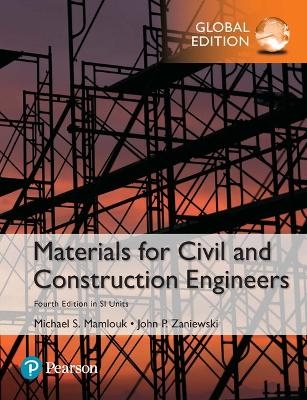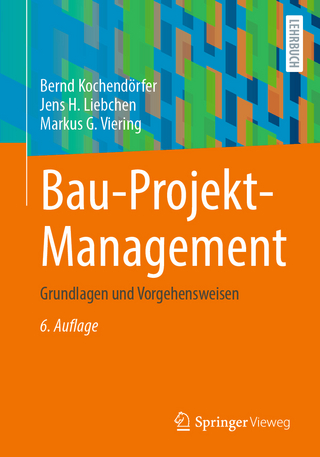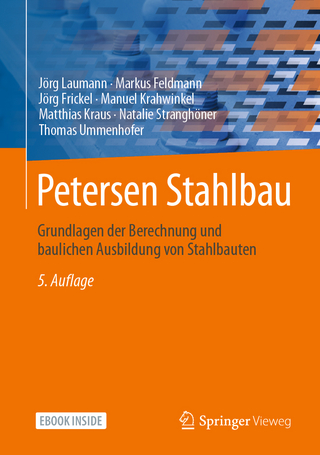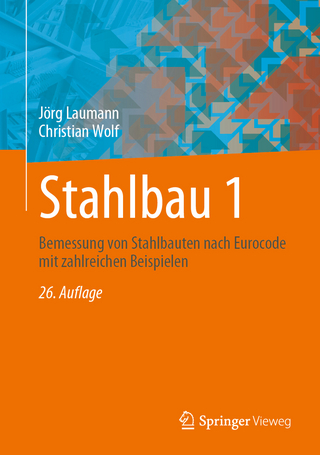
Materials for Civil and Construction Engineers in SI Units
Pearson Education Limited (Verlag)
978-1-292-15440-4 (ISBN)
Materials for Civil and Construction Engineers helps readers understand and select the materials involved in supporting the infrastructure needs of society--from buildings, to water and treatment distribution systems, to dams, highways, and airport pavements. By gaining a deep understanding of material behavior and the material selection process, readers can begin to understand how to create and maintain civil and construction engineering systems crucial to society.
The primary focus of the updates presented in this fourth edition was on the sustainability of materials used in civil and construction engineering. The information on sustainability was updated and expanded to include the most recent information. In addition, sections were added describing the sustainability considerations of each material. The problem set for each chapter was updated and increased to provide some fresh exercises. References were updated and increased in all chapters to provide students with additional reading on current issues related to different materials.
Michael S. Mamlouk is a Professor of Civil, and Environmental and Sustainable Engineering at Arizona State University. He has many years of experience in teaching courses of civil engineering materials and other related subjects at both the undergraduate and graduate levels.
ONE Materials Engineering Concepts
1.1 Economic Factors
1.2 Mechanical Properties
1.2.1 Strain Relations
1.2.3 1.2.6 hetic Characteristics
1.6 Sustainable Design
1.7 Material Variability
1.7.1 ential Transformer (LVDT)
1.8.3
TWO Nature of Materials
2.1 Basic Materials Concepts
2.1.1 Electron Configuration
2.1.2 3 Inorganic Solids
2.4 Organic Solids
2.4.1
THREE Steel
3.1 Steel Production
3.2 IronCarbon Phase Diagram
3.3 Heat Treatment of Steel
3.3.1 5.2 8 Reinforcing Steel
3.8.1 Ultrasonic Testing
3.10 Welding
3.11 Steel Corrosion
3.11.1
3.12 Steel Sustainability
3.12.1
3.12.2
Summary
Questions and Problems
3.13 References
FOUR Aluminum
4.1 Aluminum Production
4.2 Aluminum Metallurgy
4.2.1 4.3 Aluminum Testing and Properties
4.4 Welding and Fastening
4.5 Corrosion
4.6 Aluminum Sustainability
4.6.1 s
4.6.2 Summary
Questions and Problems
4.7 References
FIVE Aggregates
5.1 Aggregate Sources
5.1 Aggregate Sources
5.2 Geological Classification
5.3 Evaluation of Aggregate Sources
5.4 Aggregate Uses
5.5 Aggregate Properties
5.5.1 le Shape and Surface Texture
5.5.2 s and Durability
5.5.3 ess, and Abrasion Resistance
5.5.4 5.5.6 eight and Voids in Aggregate
5.5.7 ength and Modulus
5.5.8 5.5.9 nd Deleterious Materials
5.5.10 AlkaliAggregate Reactivity
5.5.11 5.7 Aggregates Sustainability
5.7.1 rations
5.7.2
Summary
Questions and Problems
5.8 References
SIX Portland Cement, Mixing Water, and Admixtures
6.1 Portland Cement Production
6.2 Chemical Composition of Portland Cement
6.3 Fineness of Portland Cement
6.4 Specific Gravity of Portland Cement
6.5 Hydration of Portland Cement
6.5.1 Development in Cement Paste
6.5.2 uation of Hydration Progress
6.6 Voids in Hydrated Cement
6.7 Properties of Hydrated Cement
6.7.1 6.7.3 mpressive Strength of Mortar
6.8 WaterCement Ratio
6.9 Types of Portland Cement
6.9.1 6.9.2 6.10.1 6.10.2 Reuse of Concrete Wash Water
6.11 Admixtures for Concrete
6.11.1 6.11.4 Hydration-Control Admixtures
6.11.5 6.11.6 6.12 Supplementary Cementitious Materials
6.13 Cement Sustainability
6.13.1
6.13.2
Summary
Questions and Problems
6.14 References
SEVEN Portland Cement Concrete
7.1 Proportioning of Concrete Mixes
7.1.1 Basic Steps for Weight and Absolute Volume Methods
7.1.2 xing Concrete for Small Jobs
7.2 Mixing, Placing, and Handling Fresh Concrete
7.2.1 7.2.2 e
7.2.3 Concrete
7.2.5 7.2.6 Precautions for Mixing Water
7.2.7 ir Content in Fresh Concrete
7.2.8 ading and Finishing Concrete
7.3 Curing Concrete
7.3.1 gging
7.3.3 7.3.4 ous Papers or Plastic Sheets
7.3.5 Membrane-Forming Compounds
7.3.6 7.3.8 nsulating Blankets or Covers
7.3.9 Hot Oil, and Infrared Curing
7.3.10 7.4 Properties of Hardened Concrete
7.4.1 7.4.4 ressStrain Relationship
7.5 Testing of Hardened Concrete
7.5.1 -Tension Test
7.5.3 7.5.5 Penetration Resistance Test
7.5.6 nic Pulse Velocity Test
7.5.7 .6.2 Compacted Concrete
7.6.11
7.6.12
7.7 Concrete Sustainability
7.7.1
7.7.2
Summary
Questions and Problems
7.8 References
EIGHT Masonry
8.1 Masonry Units
8.1.1 8.4 Plaster
8.5 Masonary Sustainability
8.5.1
8.5.2
Summary
Questions and Problems
8.6 References
| Erscheinungsdatum | 28.09.2017 |
|---|---|
| Verlagsort | Harlow |
| Sprache | englisch |
| Maße | 180 x 230 mm |
| Gewicht | 895 g |
| Themenwelt | Technik ► Bauwesen |
| Technik ► Maschinenbau | |
| ISBN-10 | 1-292-15440-3 / 1292154403 |
| ISBN-13 | 978-1-292-15440-4 / 9781292154404 |
| Zustand | Neuware |
| Informationen gemäß Produktsicherheitsverordnung (GPSR) | |
| Haben Sie eine Frage zum Produkt? |
aus dem Bereich


